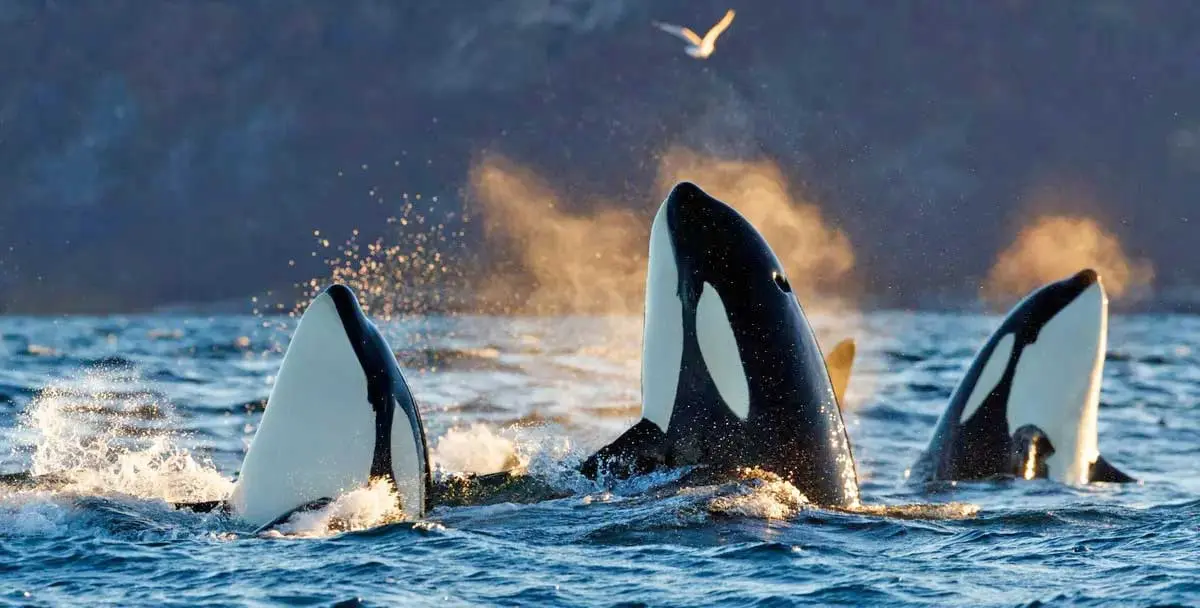The Pacific Northwest is an area that encompasses parts of both the United States and Canada, and it’s an absolute haven for nature lovers and wildlife enthusiasts. This is because it’s the ideal habitat for various coastal birds and other animals, and the chilly waters of the Pacific Ocean are home to all kinds of interesting marine life. Keep reading to learn about five stunning creatures that call this region their home.
Orca

Whale watchers, look out! North America’s Pacific Northwest is the main territory of the orca, otherwise known as the killer whale. These predatory marine mammals swim the Pacific Ocean in massive groups of up to 50 individual whales, traveling and hunting together.
Despite their name, killer whales aren’t actually whales, though. The orca falls in the dolphin family, making them the largest dolphin on Earth. They communicate very effectively and stick together as a family, known as a pod. Orca pods and their larger societal groups all “speak” distinct languages and even have differing dialects, just like humans in different countries and regions.
Their sharp talking skills aren’t the only intelligent thing about them - orcas have the second-largest brains of any marine mammal, and they’re thought to be some of the most intelligent creatures on Earth.
Roosevelt Elk

In the animal kingdom, it doesn’t get much more majestic than the Roosevelt elk, and these regal-looking antlered beauties are one of the largest surviving subspecies of elk in North America.
The elk’s antlers (which only grow on the males, known as bulls) serve a much greater purpose other than looking really impressive. This extremely fast-growing bone that grows from the tops of their heads is necessary to help regulate the animal’s body temperature, but elk also use them when fighting other males over a mate or territory.
Despite looking quite gentle and approachable, they can be aggressive and tend to want to use those horns on anyone who might approach them against their will - so watch out if you encounter them in the wild.
When it comes to appearance, the Roosevelt elk is typically much darker in color than other elk species, boasting a dark brown or even black neck with their strong, tan bodies.
Sea Otter

The Pacific Ocean is home to more than just fish when it comes to marine life. One of the cutest inhabitants of these cold waters is the sea otter, who loves the kelp-rich environment of this region.
These clever little water mammals are known for holding hands with one another and their use of tools in order to eat their food. Otters often make use of rocks to break open the shells of the mussels, crabs, and other shellfish they like to eat.
They also have incredible eyesight, both above and below the water, allowing them to navigate quickly and easily and snatch up their prey lightning-fast. Not only this, but their sense of smell is also exceptional, and they rely on their noses to determine what potential meal is safe to eat.
Northern Spotted Owl

When it comes to our feathered friends of the PNW, the Northern Spotted Owl is one of the most stunning examples.
These fowls are known as “perch-and-pounce” predators, which means that they sit and wait in silence up in the trees, using their keen night vision to watch out for their prey. When they spot their next meal, they act swiftly and silently, snatching up their tasty morsel before they even knew what hit them.
But there’s more to this spotted bird than their hunting prowess. Northern Spotted Owls are also known for being one of the very few monogamous creatures on Earth, which means they mate for life. Once these owls find a partner, they’re in it for the long haul.
Pacific Salmon

The Pacific Northwest is known for its salmon. It's in these rivers that five different species of salmon return from the saltwater to spawn - where thousands upon thousands of eggs are laid.
This is an annual migration where countless fish swim upstream with immense force, leaping waterfalls and creating quite a spectacle! The annual salmon run brings fully grown adult salmon back to their natal stream, and it brings people from far and wide to get a closer look at this amazing phenomenon.
These five salmon species - Chinook, Coho, Sockeye, Pink, and Chum salmon - form an integral part of the ecosystem. They provide essential nutrition to various predators like bears and eagles, and even their carcasses put nutrients back into the Earth.

